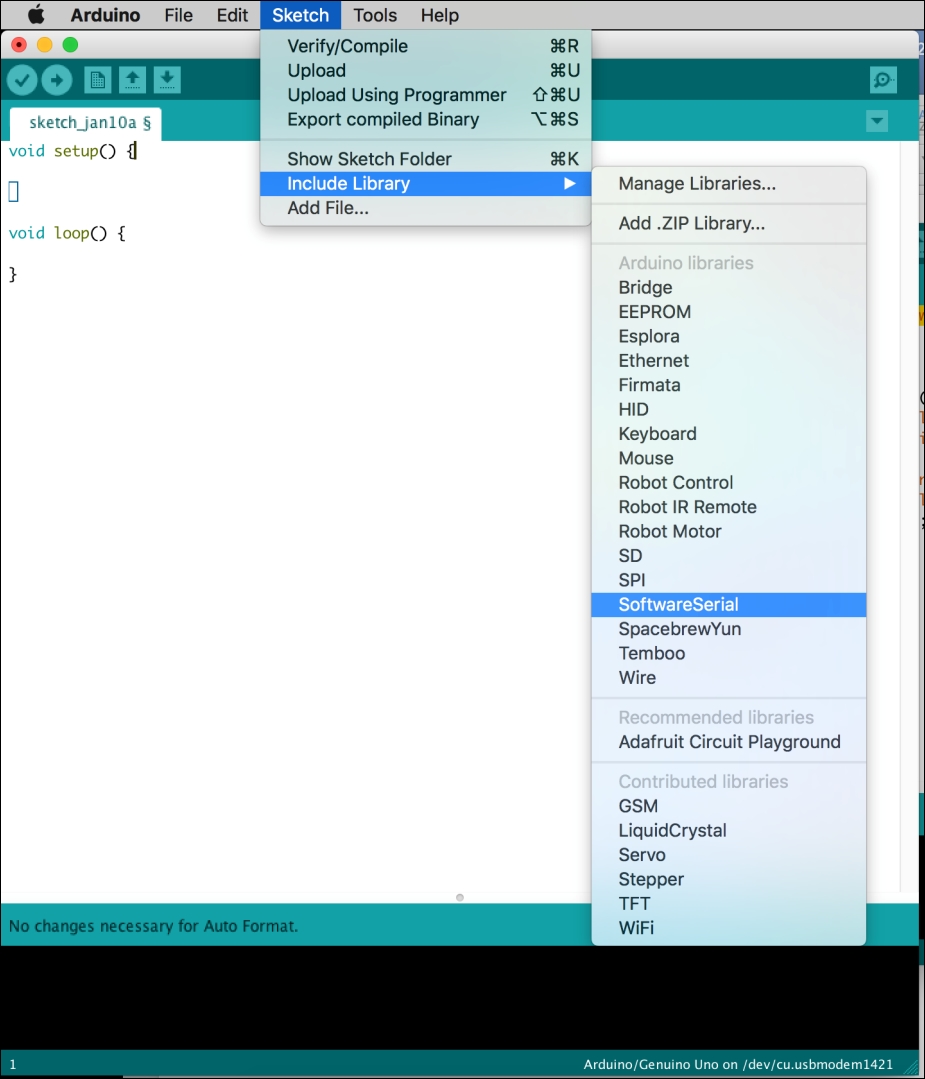Your Arduino and the GSM Shield are connected and powered up. First, open the Arduino IDE and import the SoftwareSerial.h library, as shown in the previous chapter, or go to the menu shown in the following image (Sketch | Include
Library | SoftwareSerial):

You can also manually type the following line on the top of the setup() function:
#include <SoftwareSerial.h>
Now, we will define the pins of the Arduino where TX and RX will be attached as follows:
SoftwareSerial GSMSerial(2, 3); //Pin 2 is our TX and 3 is the RX
Here, GSMSerial() is a custom function which will be used later. You can name it anything you want. We passed two parameters into this function. The first parameter is for the TX pin and the second parameter is for the RX pin.
Let's print something on the Serial Monitor while the GSM Shield get ready to work. Then we will begin initializing the Shield by putting the baud rate inside our GSMSerial() object, as follows:
GSMSerial.begin...



